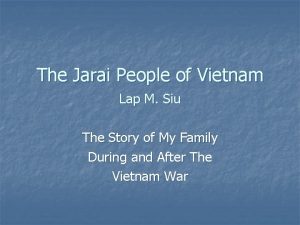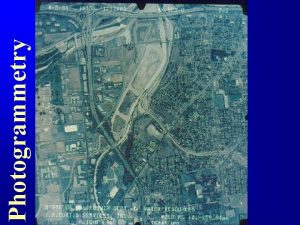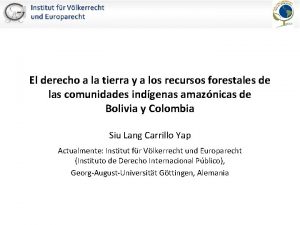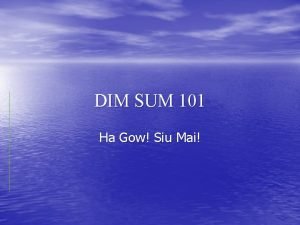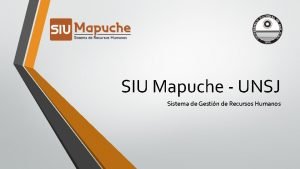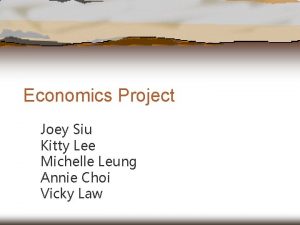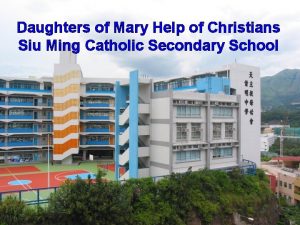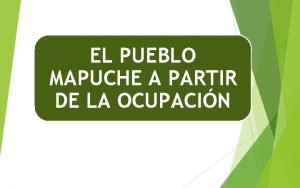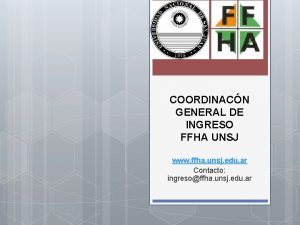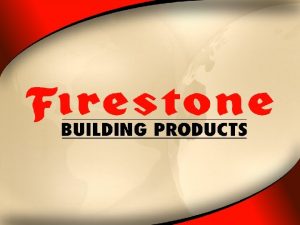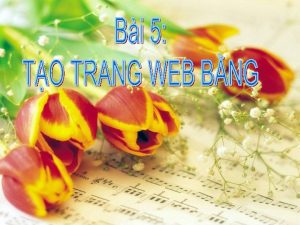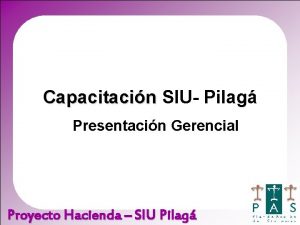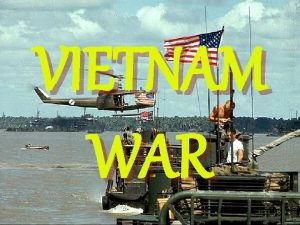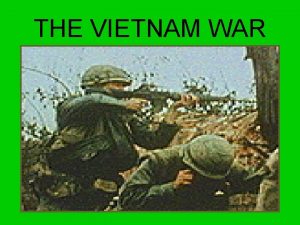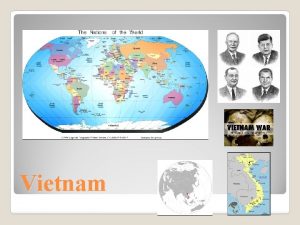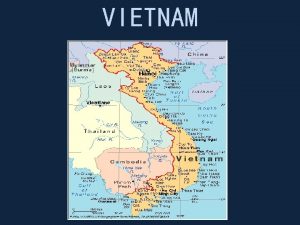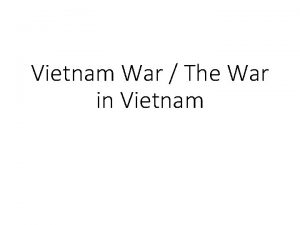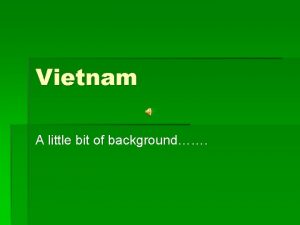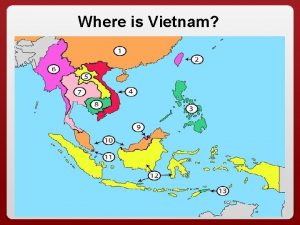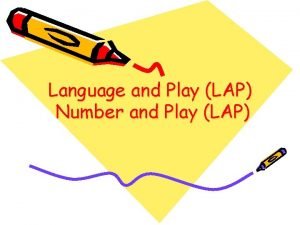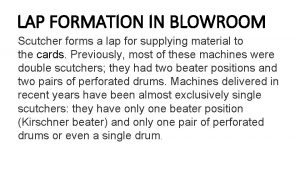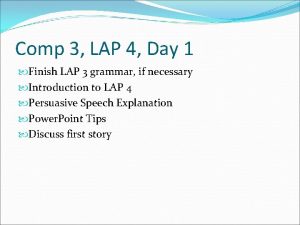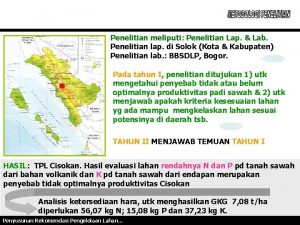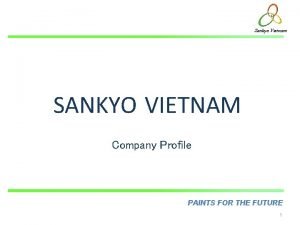The Jarai People of Vietnam Lap M Siu

















- Slides: 17

The Jarai People of Vietnam Lap M. Siu The Story of My Family During and After The Vietnam War

Who are the Jarai people? n n One of the indigenous peoples of Vietnam One of the Montagnard tribes in the Central Highlands of Vietnam Montagnard means “Children of the mountains” as the French called us In general, Jarai have darker skin than the Vietnamese or Kinh people.

What do other people call us? n n The word Jarai has many alternative spellings The Vietnamese (Kinh) call us nguoi Gia Rai or just Gia Rai Other people call us , Djrai, Djarai, Djñrai, Chñ Rai, Chrai, ect Most of the Jarai called themselves as Jñrai or Jarai n n Jarai has many dialects, but, in general, we could understand each other’s dialects The following map shows the subgroups of the Jarai

Subgroups of the Jarai By Dr. Gerald C. Hickey

Jarai longhouse near Cheo Reo, 1965 By Dr. Gerald Cannon Hickey

A Jarai woman cooking in a typical open hearth, 1965 By Dr. Gerald C. Hickey

Where do the Jarai people live? n n n Most of the Jarai people live in Plei Ku province Some live in Kon Tum and Dak Lak provinces Approximately 15 -20 thousand Jarai live in northeastern Cambodia About 2, 000 Jarai live in the U. S. mainly in Raleigh, Greensboro, & Charlotte, NC Total population of the Jarai is approximately 350, 000

The Story of My Father n n He fought alongside U. S. Special Forces from 1965 to 1970 He was a combatant interpreter for CIDG (Civilian Irregular Defense Group) He fought along the Ho Chi Minh Trail to block North Vietnamese supply of weapons to South Vietnam He witnessed the deaths of many of his fellow Montagnards who were on his team

His Life in Prison Between 1975 -1981 n n n Four Cong An (police) arrested him in the early morning one day in 1975 They burned all of his valuable documents including our family photos, marriage certificate, his South Vietnamese and American music albums, and all the documents related to South Vietnamese government. They demanded that my mom, brother and two sisters stand in a line They told my mom that they would return my dad after three or four days Then they took him to Ploi Bong prison, north of Plei Ku province. They called this place, ”Reeducation Camp. ”

The Cruelty He Received from The Cong An n n They called him a “dog” and the most dangerous element in the Vietnamese society They called him an “enemy of the Vietnamese people” and “his life worth less then the cow’s manure” One day, my father and his prison mates were sick, the Cong An threw them into a dark cell and pumped water into the cell for them to drown. For the first few months, each one received less than a pound of cooked cassava/manioc root for one day The condition of the prison and the way they treated them were terrible.

The Condition of My Family in Ploi Rongol village n n The Cong An released him, then threw him back in prison several times. My father was in prison for 6 years from 1975 to 1981 During my father’s absences, sometimes we had no food to eat, no clothes to wear, and we only survived because of the generosity of the Jarai people in our village. Because I had no clothes to wear, my mom used the sand bags that were left behind by the Americans to wrap around my waist. Our thatch house was deteriorated, in the night, we slept in the rain and had no blanket to cover ourselves.

n n In the 1980 s, many Vietnamese, mostly from the North settled in Jarai lands. When I grew up in my village, there were only two Vietnamese families that lived close to our village. The Vietnamese had no respect for the Jarai people and they called us nguoi moi, means savages. My father said, ”half of those Vietnamese who settled in Jarai lands were criminals, therefore, they stole our livestock and properties”

n n n Jarai in my village had many conflicts with the Vietnamese settlers because they took our lands and stole our properties Traditionally, each Jarai family had several or more farms. We planted rice, corn, potatoes, beans, bananas, cassavas, etc. In the early 1980 s, the government forced the Jarai to abandon their traditional ways of farming The government forced us to practice wet rice agriculture farming, which most of the Jarai were not good at. The chemicals we used to grow our rice were very toxic, which made people sick.

n n n The irrigation water that the government provided us was insufficient, so our rice died, yet we still had to pay excessive amount of taxes to the government As a result, the Jarai were forced to borrow Vietnamese’ money to buy fertilizer, herbicide, and pesticides to help their rice grow better. In doing this, we owed a lot of money to the Vietnamese people. So, many Jarai sold their lands to get some money to pay their debts.

n n The encroachment of the Vietnamese settlers was so rapid that today there almost more Vietnamese than the Jarai people in our villages Most of the Jarai parents don’t have enough food to feed their children because they lost most of their traditional farms The Jarai are forced to work for the Vietnamese with less than minimum wages The death rate of the Jarai people in my village has increased rapidly because of malnutrition and contamination by the chemicals they used in wet rice agriculture

Conclusion n n Traditionally, we were free people; we were the owners of our lands, communities, history, customs, and society. We believed in being independent, therefore, our men and women fought bravely with their South Vietnamese and American allies. As a people, we were honest and proud, therefore, we refused to give up the fight, even when the American Special Forces left in 1975. After 1975, our Montagnard beloved men and women joined the FULRO movement and continued to fight the Vietnamese communists until 1992. As a result, approximately 10, 000 of our Montagnard men, women, and children died.

Thank You Very Much Bñni Kñ Gih Lu By. Dr. Gerald C. Hickey
 Jarai people
Jarai people Hươu thường đẻ mỗi lứa mấy con
Hươu thường đẻ mỗi lứa mấy con Sự nuôi và dạy con của hươu
Sự nuôi và dạy con của hươu Thế nào là mạng điện lắp đặt kiểu nổi
Thế nào là mạng điện lắp đặt kiểu nổi Endlap and sidelap
Endlap and sidelap Siu lang carrillo yap
Siu lang carrillo yap Har gow siu mai
Har gow siu mai Siu ffha
Siu ffha Monopolists may be artists
Monopolists may be artists Siu thesis template
Siu thesis template Sunny siu
Sunny siu 蕭明中學
蕭明中學 Ng siu mui
Ng siu mui Dr wong siu wang
Dr wong siu wang Siu preinscripción unsa
Siu preinscripción unsa Siu mapuche
Siu mapuche Unsj ffha
Unsj ffha Siu ais
Siu ais
